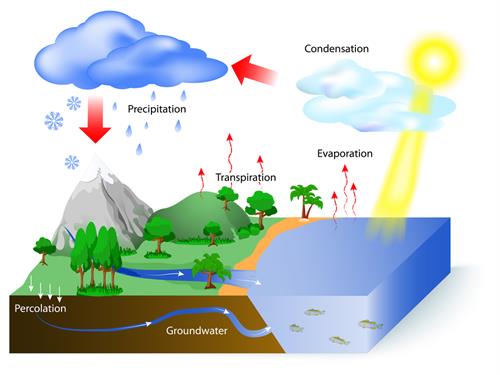
PUMPA - SMART LEARNING
எங்கள் ஆசிரியர்களுடன் 1-ஆன்-1 ஆலோசனை நேரத்தைப் பெறுங்கள். டாப்பர் ஆவதற்கு நாங்கள் பயிற்சி அளிப்போம்
Book Free DemoHydrosphere
Water is one of the most vital natural resources on Earth. Due to its abundant water resource, the Earth is also called the Blue planet or watery planet and thus stands unique among all other planets.
The hydrosphere is the total amount of water on a planet. The hydrosphere includes water in all three forms i.e. on the planet's surface, underground, and air.
Over\ 97% of the water on the Earth’s surface is present in the oceans. Less than 3% of water is held on land as rivers, lakes, reservoirs, glaciers, ice caps, groundwater, and water vapour in the air.
Hydrological Cycle
Water is dynamic and moves above and below the Earth's surface through the hydrosphere in a cycle. This cycle is called the Hydrological cycle.

Water cycle
Water collected in clouds falls to Earth in the form of rain or snow. This water gets collected in rivers and reaches lakes and oceans. Then, it again evaporates and reaches the atmosphere. This cycle is repeated again and again. This cycle is called the water cycle.
Evaporation, condensation and precipitation are the three major processes involved in the water cycle. Constantly water changes its form, i.e. among Ice (solid), water (liquid) and water vapour (gas). Time taken for these processes can be anywhere between the blink of an eye or even over millions of years. Water resources of the Earth are broadly divided into fresh water and saltwater resources. In the next section, let's us briefly learn about fresh and saltwater resources.